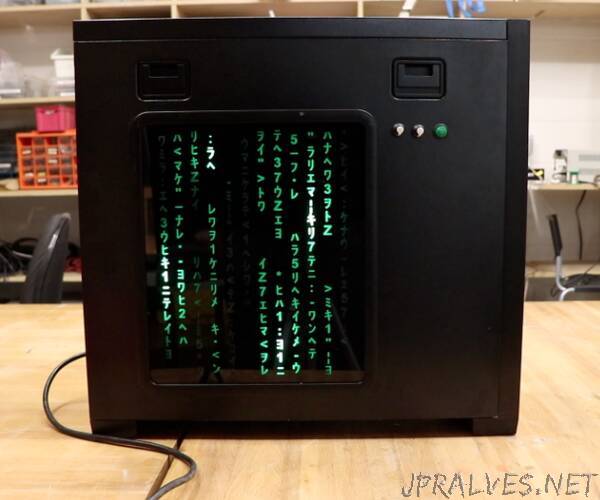
“This project uses a PCB board with a NodeMCU ESP8266, coded to control 216 NeoPixels, to animate the side of a computer tower with the famous “raining code” animation from the Matrix franchise.
The NeoPixel control board is a modular, customizable PCB breakout board for controlling multiple strips of NeoPixels with user input options to control the speed and brightness of the display with potentiometers and control the animation mode with a push button.
This project does use tools like laser cutters that are not accessible to everyone, so alternative options and suggestions throughout this project such as creating a spray paint stencil with a traditional printer and also building a breadboard circuit instead of having the PCB boards fabricated via online services.
The GitHub repo for this project, including the PCB Gerber files and code, is available here: https://github.com/WillDonaldson/NeoPixel_Control_Board
Materials
- 1x PCB (see comments in next section)
- 1x NodeMCU ESP8266
- 1x 74AHCT125 chip
- 2x 10K Ohm resistors
- 4x 470 Ohm resistors
- 2x 1N4001 diodes
- 1x 1000uF electrolytic capacitor
- 12x M3 20mm bolts
- 1x DC barrel jack female and male connector (recommend 5A rating over the more common 2.5A rating)
- 1x ON/OFF switch (optional)
- 1x Momentary push button (optional)
- 2x 10K Ohm potentiometers (optional)
- 2x 2-pin JST-VH female and male connectors (optional)
- 4x 3-pin JST-VH female and male connectors (optional)
- Zipties for cable management (optional)
- 5m strip of WS2812B NeoPixels (60 LEDs/meter)
- 2x 40cm by 40cm sheet of black acrylic 3mm (dimensions will vary depending on you PC)
- 1x 40cm by 40cm sheet of white diffusing acrylic 3mm (dimensions will vary depending on you PC)_
- Acrylic glue or super glue_
- Assorted electrical accessories: wire, solder, heat shrink tube
- Computer with a power supply that has one 5V and GND pin available. Alternatively can bypass the inbuilt power supply and power the circuit by a traditional 5V 5Amp power supply
Tools
- Laser cutter (optional but recommended)
- Soldering iron
- Allen key for M3 bolt
- Miscellaneous tools: Wire strippers, snips”
